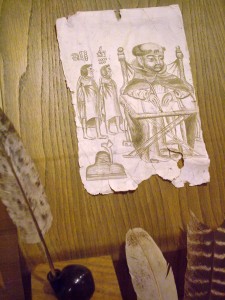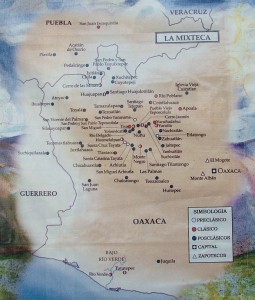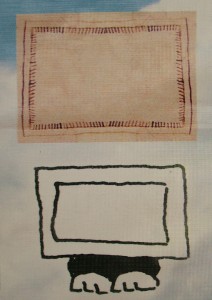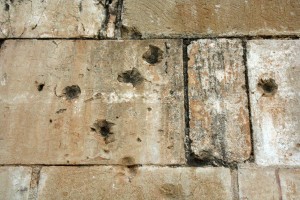On this page we are assembling resources relating to our excursion to Yanhuitlán, in the Mixteca Alta.
This map shows the Mixteca region of the state of Oaxaca, including renditions of place names in the Mixtec language. Click on the map to see a larger view.
Driving toward Yanhuitlán from Oaxaca, as you near the small community today, the massive colonial church is a sight to see. Here is another photo of the church that better conveys the sense of its being out of proportion to the small community around it. We will visit the church, which has recently been restored. As a footnote about the reliability of images in codices, here is a drawing of the Yanhuitlán church in the Yanhuitlán Codex. You might not have recognized it from the drawing.
Yanhuitlán is “Yodzocahi” in the Mixtec language. Typically, the Nahua colonizers imposed their translation of the place name into their own language. Some Mixtecs today are trying to reassert the Mixtec place names.
Interestingly, on one external wall of the church, you will find bullet holes. These date from executions held here during the Mexican revolution.
We will also visit the ruins of the sixteenth-century Casa del Cacique, or remains of the home of the indigenous lord of Yanhuitlán, who survived the Spanish invasion and colonization and retained a significant measure of power and status locally. The colonial-era, indigenous-authored Codex of Yanhuitlán includes some drawings of the cacique of Yanhuitlán, such as this one where he is seated on his icpalli (Nahuatl for woven reed mat-throne) and speaking to the local Spanish overlord (seated on his curule chair, imported from Europe). The cacique has adopted the use of European clothing and a hat. It was through cooperating with foreign invaders that he was able to retain his position, although it was diminished in some respects over what it would have been if it were not for Spanish colonialism.

Reproduction of a page from the Yanhuitlán codex. Museum in the Santo Domingo Cultural Center. (Photo, S. Wood, 2009)
In this page the relative size of the Dominican friar is interesting, especially in comparison with the two indigenous lords standing nearby. Note the friar’s use of a table and chair and the emphasis on his literacy.




